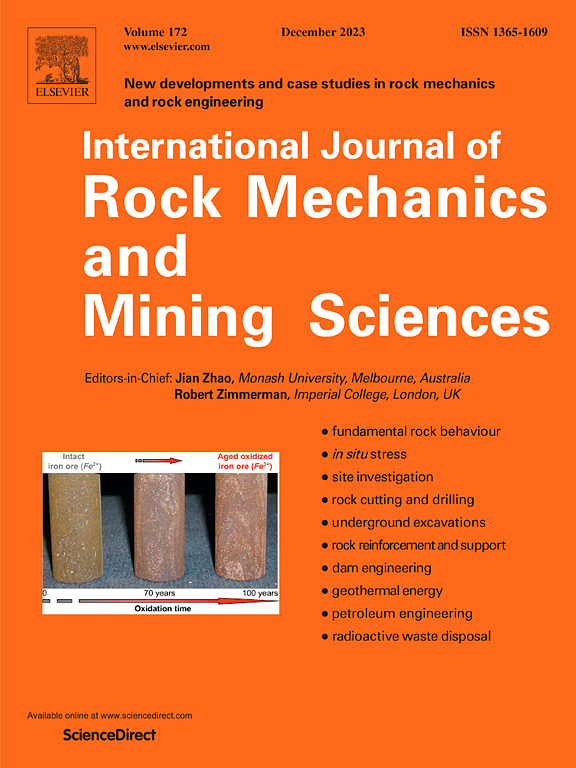Influences of the stress ratio and local micro mineral aggregates on small fatigue crack propagation in the shale containing bedding planes
IF 7
1区 工程技术
Q1 ENGINEERING, GEOLOGICAL
International Journal of Rock Mechanics and Mining Sciences
Pub Date : 2024-11-29
DOI:10.1016/j.ijrmms.2024.105980
引用次数: 0
Abstract
Due to the existence of bedding planes in shale oil reservoirs, the complexity of crack networks created by conventional hydraulic fracturing (HF) technology is limited, resulting in low oil production. In this paper, a fatigue loading method was proposed to increase the complexity of the cracking network. The propagation behaviors of small cracks were investigated and compared under both monotonic and fatigue loading conditions by using SEM in-situ three-point bending tests. In addition, the influences of local micro mineral aggregates and stress ratios (R = 0.1, 0.3 and 0.5) on the propagation behavior of small fatigue cracks (SFCs) in shale were quantitatively evaluated. The SEM in-situ fatigue tests demonstrated the effectiveness of fatigue loading in enabling SFC to propagate through the bedding plane and increase crack network complexity from a micro perspective. A fitting exponential formula of the stress intensity factor range threshold ΔKth and stress ratio R was obtained. This study assists us in deeply understanding the influence of micro mineral aggregates and stress ratio on the SFC propagation mechanism and its implications for HF design in shale oil reservoirs.
应力比和局部微矿物团聚体对含层理面页岩疲劳裂纹扩展的影响
由于页岩油储层中存在层理平面,常规水力压裂技术产生的裂缝网络复杂性有限,导致产量较低。本文提出了一种增加裂纹网络复杂性的疲劳加载方法。利用扫描电镜原位三点弯曲试验,研究和比较了疲劳加载和单调加载条件下小裂纹的扩展行为。此外,定量评价了局部微矿物团聚体和应力比(R = 0.1、0.3和0.5)对页岩小疲劳裂纹扩展行为的影响。SEM原位疲劳试验表明,从微观角度看,疲劳载荷使SFC通过层理平面传播,增加了裂纹网络的复杂性。得到了应力强度因子范围阈值ΔKth与应力比R的拟合指数公式。该研究有助于我们深入理解微矿物团聚体和应力比对页岩储层SFC扩展机制的影响及其对HF设计的启示。
本文章由计算机程序翻译,如有差异,请以英文原文为准。
求助全文
约1分钟内获得全文
求助全文
来源期刊
CiteScore
14.00
自引率
5.60%
发文量
196
审稿时长
18 weeks
期刊介绍:
The International Journal of Rock Mechanics and Mining Sciences focuses on original research, new developments, site measurements, and case studies within the fields of rock mechanics and rock engineering. Serving as an international platform, it showcases high-quality papers addressing rock mechanics and the application of its principles and techniques in mining and civil engineering projects situated on or within rock masses. These projects encompass a wide range, including slopes, open-pit mines, quarries, shafts, tunnels, caverns, underground mines, metro systems, dams, hydro-electric stations, geothermal energy, petroleum engineering, and radioactive waste disposal. The journal welcomes submissions on various topics, with particular interest in theoretical advancements, analytical and numerical methods, rock testing, site investigation, and case studies.

 求助内容:
求助内容: 应助结果提醒方式:
应助结果提醒方式:


